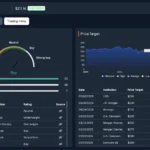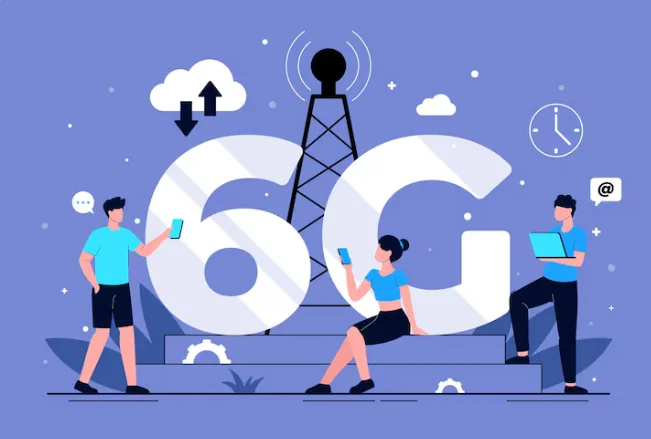How to Improve Your Small Business Website to Get More Leads/Appointment Bookings

In today’s digital era, establishing a robust online presence is essential for the success of any small business. Your website functions as the virtual storefront for your enterprise, and it frequently forms the initial impression potential customers have of your products or services. If you’re aiming to enhance lead generation and secure more appointment reservations, one effective way to accomplish this is by incorporating a reservation tool into your website. In this article, we’ll delve into the significance of a reservation tool and provide you with a comprehensive guide on how to enhance your small business website to garner more inquiries and appointment booking widget reservations.
Exploring the Potential of a Reservation Widget
A scheduling widget is a user-friendly tool that enables your website visitors to effortlessly arrange appointments, and consultations, or book reservations directly through your website. It simplifies the scheduling process for potential customers, making it convenient and hassle-free. By integrating a booking widget into your small business website, you can streamline your appointment scheduling system, enhance customer engagement, and ultimately, improve your conversion rate.
1. Choose the Right Booking Widget
Choosing the appropriate scheduling tool is crucial. Seek out one that aligns with your business requirements and seamlessly integrates with your website. Research and compare features to find the one that suits your business model and target audience best.
2. Create a User-Friendly Interface
Ensure that your scheduling tool is easy to locate and navigate on your website. Ideally, it should be prominently displayed on your homepage or a dedicated “Book Now” page. Use clear and concise language to guide visitors through the scheduling process, and ensure that the tool is mobile-responsive for users on smartphones and tablets.
3. Provide Detailed Information
To instill confidence in potential customers, include detailed information about your services, availability, and pricing within the scheduling tool. Transparency is key to building trust and encouraging bookings. Be sure to answer common questions and address potential concerns upfront on your appointment booking page.
Optimize Your Website for Search Engines
Incorporating a booking widget is just one piece of the puzzle. To attract more leads and appointment bookings, you must also focus on optimizing your website for search engines (SEO). When your site ranks higher in search results, it becomes more visible to potential customers. Here are some SEO strategies to consider:
1. Keyword Optimization
Research relevant keywords related to your business and services. Use tools like Google Keyword Planner to identify high-traffic, low-competition keywords. Incorporate these keywords naturally into your website content, including your scheduling tool page, to enhance your chances of ranking higher in search results.
2. Mobile-Friendliness
Ensure that your website is fully responsive on mobile devices. Google prioritizes mobile-friendly websites in its search rankings. A mobile-responsive design not only improves your SEO but also enhances the user experience for visitors who access your site on their phones, including those who want to utilize your appointment scheduling tool.
3. Page Speed Optimization
Optimize your website’s loading speed. Slow-loading websites can result in higher bounce rates and lower search rankings. Compress images, minimize code, and use content delivery networks (CDNs) to improve your site’s performance.
4. High-Quality Content
Regularly update your website with high-quality, relevant content. Blog posts, articles, and informative pages can help establish your authority in your industry and attract more organic traffic. Be sure to include calls-to-action that encourage visitors to book appointments using your widget.
Engage Your Audience
Engaging with your website visitors is crucial for turning leads into appointment bookings. Here are some strategies to foster engagement:
1. Live Chat Support
Consider implementing a live chat feature on your website. This allows visitors to ask questions or seek assistance in real-time, increasing their likelihood of converting into customers.
2. Email Marketing
Build an email list by offering valuable content in exchange for visitors’ contact information. Use email marketing campaigns to nurture leads, share promotions, and remind potential customers to book appointments using your widget.
3. Social Media Integration
Integrate social media buttons on your website to encourage visitors to follow and engage with your business on platforms like Facebook, Instagram, or LinkedIn. Engaging with your audience on social media can also lead to more bookings.
Monitor and Analyze
Finally, continuous monitoring and analysis of your website’s performance are essential for making data-driven improvements. Use web analytics tools like Google Analytics to track user behavior, conversion rates, and the effectiveness of your appointment scheduling tool. Adjust your strategies based on the insights you gather to continually improve your website’s ability to generate leads and schedule appointments.
Conclusion
A booking widget can be a game-changer for your small business website when it comes to generating more leads and appointment bookings. By selecting the right widget, optimizing your website for search engines, engaging with your audience, and constantly monitoring and improving your online presence, you can create a powerful digital platform that not only attracts potential customers but also converts them into loyal clients. Take the steps outlined in this comprehensive guide, and watch your small business thrive in the competitive online landscape.

Pallet Wood Sourcing: Ethical and Sustainable Practices

Understanding Cost-Benefit Analysis for Project Feasibility

9 Best Free Stock Analysis Websites in 2025

Accelerating drug discovery through the DEL-ML-CS approach

AI in Marketing Is No Longer a Buzzword — It’s the Strategy

5G To 6G: How Next Gen Telecom Companies Are Currently Rewriting Connectivity Rules

SuperBox S7 Max: A Complete Review of the Next‑Generation Streaming Box

Executive Leadership in 2025: Navigating AI, Cloud, and Cybersecurity Transformation








